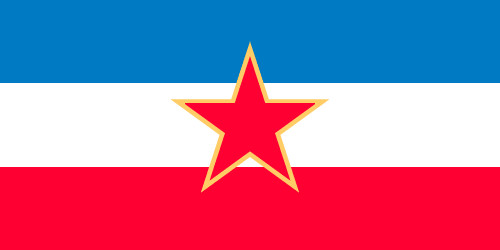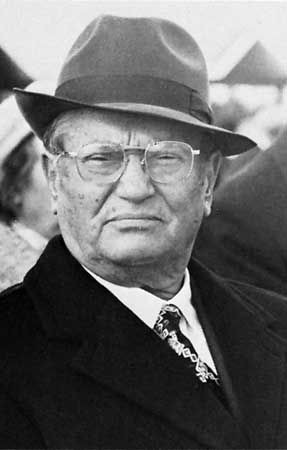Yugoslavia, a name that once resonated across the Balkan Peninsula and beyond, evokes images of a complex and often turbulent past. For those asking “Where Is Yugoslavia?”, the answer is layered in history. Yugoslavia no longer exists as a unified nation-state, but its legacy and geographical footprint remain deeply embedded in the region of Southeastern Europe. To understand where Yugoslavia was, we must delve into its formation, evolution, and eventual dissolution.
The second iteration of Yugoslavia, officially known as the Socialist Federal Republic of Yugoslavia, emerged from the ashes of World War II. Led by Josip Broz Tito and his Partisan forces, Yugoslavia liberated itself from Axis occupation in 1944-45. This new socialist state, established in 1946, largely encompassed the territory of the pre-war Kingdom of Yugoslavia, expanding to include Istria and Dalmatia, territories acquired from Italy. The kingdom was replaced by a federation of six republics, designed to be nominally equal: Croatia, Montenegro, Serbia, Slovenia, Bosnia and Herzegovina, and Macedonia. Within Serbia, Kosovo and Vojvodina were granted autonomous status, acknowledging the distinct interests of Albanian and Magyar populations respectively.
 Flag of the Socialist Federal Republic of Yugoslavia (1945–91).
Flag of the Socialist Federal Republic of Yugoslavia (1945–91).
Despite its federal structure, the early Socialist Yugoslavia was highly centralized. Tito’s Communist Party of Yugoslavia held firm political and economic control, mirroring the Soviet Union’s model. However, over time, a series of constitutional reforms in 1953, 1963, and 1974 gradually decentralized power. This shift moved authority from the federal level to economic enterprises, municipalities, and the republic-level apparatuses of the League of Communists of Yugoslavia (the renamed Communist Party). This evolving system operated on three tiers: the communes (opštine), the republics, and the federation. The communes, numbering around 500, played a crucial role in revenue collection and providing social services at the local level.
The 1974 constitution further refined the governmental structure. Assemblies at the commune, republic, and autonomous province levels were composed of three chambers: the Chamber of Associated Labour (representing worker delegations), the Chamber of Local Communities (representing citizens), and the Sociopolitical Chamber (elected from socialist organizations). The federal assembly, known as the Skupština, consisted of two chambers: the Federal Chamber (delegates from work organizations and communes) and the Chamber of Republics and Provinces (delegates from republican and provincial assemblies).
 Josip Broz Tito, 1972.
Josip Broz Tito, 1972.
Executive functions were managed by the Federal Executive Council, which included a president, representatives from republics and provinces, and administrative officials. Tito was granted life presidency in 1974. After his death in 1980, leadership transitioned to a rotating collective presidency composed of regional representatives, a system that proved less effective and contributed to political instability in the long run.
Economically, post-war Yugoslavia underwent significant transformation. The communist government nationalized key sectors like land, industry, and public utilities, embarking on a path of rapid industrialization. Following a split with the Soviet Union in 1948, Yugoslavia gradually adopted market mechanisms, particularly by the 1960s. A unique feature of the “Yugoslav system” was “workers’ self-management.” This system, formalized in the 1976 Law on Associated Labour, allowed workers to participate in enterprise management through work organizations. These organizations, either Basic Organizations of Associated Labour (within a single enterprise) or Complex Organizations of Associated Labour (uniting different segments of an industry), were governed by workers’ councils. While managers were theoretically subordinate to these councils, their expertise often gave them considerable influence.
Between 1953 and 1965, Yugoslavia experienced remarkable economic growth under this system. However, development slowed subsequently. Lack of efficiency incentives led workers’ councils, often in collusion with local banks and political figures, to inflate wages beyond organizational capacity. Inflation and unemployment became pressing issues, especially in the 1980s, and productivity remained sluggish. These systemic flaws were temporarily masked by extensive foreign borrowing. By 1983, the International Monetary Fund (IMF) demanded significant economic restructuring as a condition for further financial support.
Disagreements over how to implement these reforms exacerbated existing tensions between wealthier northern and western regions, which were expected to fund federal development programs, and poorer southern and eastern regions, where these funds were often directed towards inefficient enterprises or prestige projects. These economic and regional disparities played a direct role in the eventual disintegration of the second Yugoslavia in the early 1990s, leading to the formation of independent states across the Balkan peninsula. So, to answer “where is yugoslavia” today, it is crucial to understand that Yugoslavia’s former territories are now occupied by the independent nations of Serbia, Croatia, Slovenia, Bosnia and Herzegovina, Montenegro, and North Macedonia, with Kosovo as a disputed territory. The legacy of Yugoslavia, however, continues to shape the political and cultural landscape of this region.

